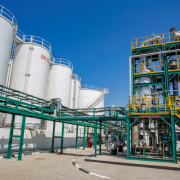European Union: Goal is to Make Sustainable Products the Norm
Under its sustainable products initiative, the European Commission aims to ensure that all products placed on the EU market are designed with sustainability objectives in mind.
End of March last year, the European Commission presented a package of European Green Deal proposals “to make sustainable products the norm in the EU, boost circular business models and empower consumers for the green transition”, a press release said. “As announced in the Circular Economy Action Plan, the Commission is proposing new rules to make almost all physical goods on the EU market more friendly to the environment, circular, and energy efficient throughout their whole lifecycle from the design phase through to daily use, repurposing and end-of-life.”
End of November in the same year, a new proposal regarding packaging followed. The proposed new EU-wide rules on the packaging aim to tackle the constantly growing source of waste and of consumer frustration. “On average, each European generates almost 180 kilograms of packaging waste per year,” the Commission stated. Packaging would be one of the main users of virgin materials as 40 percent of plastics and 50 percent of paper used in the EU is destined for packaging. “Without action, the EU would see a further 19 percent increase in packaging waste by 2030, and for plastic packaging waste even a 46 percent increase.”
According to the European Commission, the new rules aim to stop this trend. “For consumers, they will ensure reusable packaging options, get rid of unnecessary packaging, limit overpackaging, and provide clear labels to support correct recycling,” a press release underlined. “For the industry, they will create new business opportunities, especially for smaller companies, decrease the need for virgin materials, boosting Europe‘s recycling capacity as well as making Europe less dependent on primary resources and external suppliers. They will put the packaging sector on track for climate neutrality by 2050.”
As reported, the proposed revision of the EU legislation on Packaging and Packaging Waste has three main objectives. First, to prevent the generation of packaging waste: reduce it in quantity, restrict unnecessary packaging and promote reusable and refillable packaging solutions. Second, to boost high quality (‘closed loop‘) recycling: Make all packaging on the EU market recyclable in an economically viable way by 2030. And finally, to reduce the need for primary natural resources and create a well-functioning market for secondary raw materials, increasing the use of recycled plastics in packaging through mandatory targets.
- The main target is to reduce packaging waste by 15 percent by 2040 per Member State per capita, compared to 2018. “This would lead to an overall waste reduction in the EU of some 37 percent compared to a scenario without changing the legislation. It will happen through both reuse and recycling,” the Commission is convinced.
- To foster reuse or refill of packaging, which has declined steeply in the last 20 years, “companies will have to offer a certain percentage of their products to consumers in reusable or refillable packaging, for example takeaway drinks and meals or e-commerce deliveries”. There would also be some standardization of packaging formats and clear labelling of reusable packaging.
- To clearly address unnecessary packaging, certain forms of packaging will be banned, for example single-use packaging for food and beverages when consumed inside restaurants and cafes, single-use packaging for fruits and vegetables, miniature shampoo bottles and other miniature packaging in hotels.
- Many measures aim to make packaging fully recyclable by 2030, the Commission pointed out. “This includes setting design criteria for packaging; creating mandatory deposit return systems for plastic bottles and aluminum cans; and making it clear which very limited types of packaging must be compostable so that consumers can throw these to bio-waste.”
- There would also be mandatory rates of recycled content that producers have to include in new plastic packaging. “This will help turn recycled plastic into a valuable raw material – as already shown by the example of PET bottles in the context of the Single-Use Plastics Directive.”
The proposal would also clear up confusion on which packaging belongs to which recycling bin. “Every piece of packaging will carry a label showing what the packaging is made of and in which waste stream it should go. Waste collection containers will carry the same labels. The same symbols will be used everywhere in the EU.” By 2030, the proposed measures would bring greenhouse gas emissions from packaging down to 43 million tons compared to 66 million if the legislation is not changed, the Commission wrote. The costs of environmental damage for the economy and society would be reduced by 6.4 billion Euro relative to the baseline 2030. The proposal on packaging and packaging waste would be considered by the European Parliament and the Council, in the ordinary legislative procedure.
Bioplastics
Furthermore, it is intended to clear up the confusion around biobased, biodegradable and compostable plastics. As underlined by the Commission, the new framework would clarify in what way these plastics could be part of a sustainable future.
(Published in GLOBAL RECYCLING Magazine 1/2023, Page 28, Photo: hkama / stock.adobe.com)







